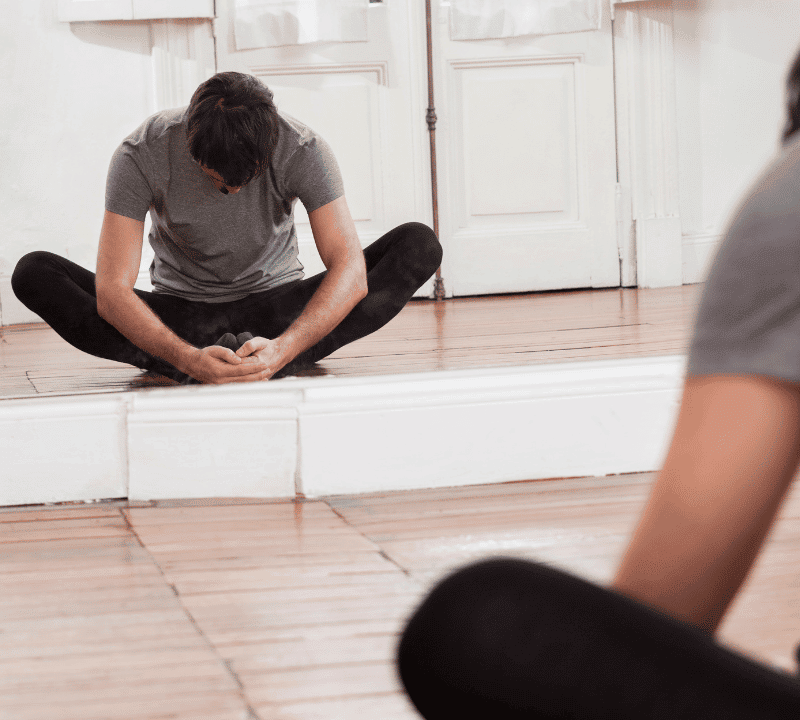
The ballet studio is my antidote to stress and burnout. At work, I have clients. Deadlines. Spreadsheets. Compliance certificates. At home, I am torn in 5 different directions. In the ballet studio, I am my own person. I can hear my own thoughts. I can give a hundred per cent to my practice. As can you.
I arrive in the studio with a good twenty minutes to spare. Enough time to quickly check my text messages and switch off my phone – whatever is happening at the office can wait. I peel off my shoes at long last, and slip on my ballet flats. What a relief to bid farewell to my smartwatch- an escape from the buzzing alarms. For the next 90 minutes, I am my own person. My body and my mind are my tool – my épée. My quill. My charcoal stick. My paintbrush.
Switch off your distractions and carve out uninterrupted time for your practice, whatever it may be.
I find my place at the barre, beginning my self-paced warmups. Always dynamic, never static. Static stretches cool down the muscles, dynamic ones prime them for movement. And movement – glorious movement! At the office I trudge from boardroom to boardroom. March from client to colleague. In the studio I glide; I chassé, I détourné (a 180 degree turn on demi-pointe).
Rhythmic movement often helps one to unwind.
Apart from dancing, other options include cycling, swimming and walking. Or lying flat on the ground in corpse position, listening to one’s heartbeat. No one’s judging.
Catching a glimpse of myself in the mirror, I remind myself why I am here. Not to pay my bills; but to lose myself in a world of artistry – elegant lines and breathing arms. Expressive head tilts and graceful bends. Poised balances and explosive jetés (a ballet leap in which the weight of the dancer is transferred from one foot to the other.). My head, held high above my shoulders. My shoulders, relaxed. My core switched on and activated.
Find a reason to start, and keep going!
As I begin the class, the familiar refrains are like an old friend, embracing me with open arms. Barre, then centre. Adage (slow exercises), then allégro (fast exercises). Demi-pliés (half-bends), then pliés (full bends). Walk, then run.
The rond de jambe (a movement in classical ballet in which one leg moves in a straight line away from the body before drawing about in a semi-circular motion) are getting quicker, and I remember to keep them smooth and glide through first position. I no longer cling onto the barre with a death-grip – it is my dance partner, whom I treat with honour and respect.
It gets easier and more natural with time.
I revise my french; Avant – forward. Arrière – backward.
No sheepish looks after mistakes – I will own them and keep moving avant!
We finish the next exercise in fifth bras bas (arms in a rounded position) and give it my all.
A twinge from my old right shoulder injury stops my full extension in the next exercise. I recognise it, I acknowledge it, and I breathe through it. It may not be my best port de bras (movement of the arms), but it will not stop me from completing the exercise.
It doesn’t have to be perfect.
It is your practice, and it will do you good.
We move into the centre, and our teacher calls us to begin in en croisé (a crossed line of body alignment). I close my eyes for a moment, and I am no longer standing cross-legged in a bustling suburban estate. I am in the spotlight, arrayed in the finest threads, with an audience of a thousand eyes fixed on my every move. I open my eyes, and I am aware of every part of my body, from my eyeline (towards the audience) to my outstretched toes (pointed, always pointed). I bring my everything into my oevure for the audience of one.
Remember why you are doing this.
I end with my révérence – my dedication to my ballet teacher. To the years of discipline she has brought to the class, and the excellence she imparts to us. I accept the corrections in the spirit they are intended. To bring razor-sharp focus and attention to the movements and stillness.
The barre is my home.
The barre is my meditation.
The barre is my mindfulness.
by Andrew Gan
